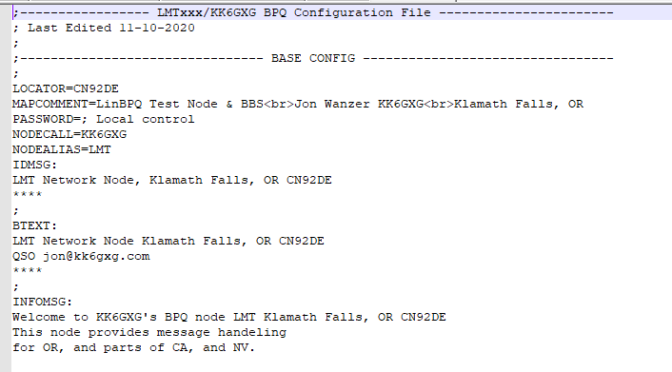Background (very condensed)
Packet technology stems from the early days of telephone modems for computers, 300, 1200, and 9600 bps modems. They used a protocol known as X.25, the screechy modem sound from the movie War Games is an example. Hams being the ingenious folks we are, thought if this audio can go over a phone line, it should work over FM radio as well, I’m not going to go into the protocol here, but they were right, AX.25 packet radio was born.
In the 80s and 90s, there was a robust packet community in amateur radio. Around the same time, BBSs with phone links were popular so were packet BBSs. Packet BBS were being networked together over RF at about the same time landline BBSs were linking together by phone links. When the internet hit the public market landline and RF BBSs were linked that way as well.
So what “killed” packet networks? The inability of the rules to adapt to the new-fangled internet, mostly anyway. As advertising and online commerce began to proliferate the internet, this presented a conflict with amateur rules for non-commercial activities.
Jumping ahead 30 years, packet is making a comeback! Not that it ever really went away. People are rebuilding the old packet networks. There is some network rebuilding going on right in my own back yard so to speak.
As the financial obstacles to entry in packet radio fall to open-source freeware and soundcard TNCs the biggest hurdle, aside from learning the software, is knowing the network topology. This is where this project was born. Mapping the packet network by node pathways and geographically.
Much more on this to come.
References
Ford, Steve. VHF Digital Handbook. ARRL: Newington CT, 1999.
annotation coming soon
Gibby, Gordon L. and Barry Isbelle. Amateur Radio Digital & Voice Emergency Communications. Second ed. Self published 2017.
annotation coming soon
Grubbs, Jim. Digital Communications with Amateur Radio: The Complete Packet Radio Book. Master Publishing: Richardson TX, 1988. Distributed by Radio Shack.
Probably the most complete book on Packet radio communications that does not focus on APRS.
Horzepa, Stan. APRS: Tracks, Maps and Mobiles: A guide to Automatic Position Reporting System. ARRL: Newington CT, 1999.
annotation coming soon
updated 28 December, 2023

